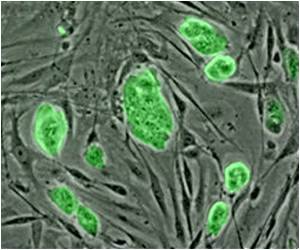- Pluripotent or embryonic stem cells (PSC) can differentiate between all types of tissues in the body
- PSCs are therefore useful for research in the field of regenerative and reparative medicine
- Identification of cell specific markers of immature PSCs will simplify their cultivation and use for research purposes
Naïve or pre-implantation pluripotent or embryonic stem cells (PSCs) can be obtained from primed post-implantation PSC resetting, but current methods do not allow isolation of unmodified naïve cells.
Ability to identify and isolate naïve stem cells which are still not primed is important in the field of stem cell and research in early embryonic development.
Naïve cells are easier to cultivate and manipulate for research purposes and naïve PSCs permit generation of tissue types that are difficult with primed PSCs.
Details of the Research
- Using a set of antibody based screens, the research team was able to determine cell specific markers for the naïve and primed pluripotent stem cells (PCSs).
- By validating a set of antibodies in culture lines of multiple naïve and primed PSCs, the scientists established a set of proteins that were expressed specifically on the pre-implantation but not the post-implantation embryo, confirming the specificity of the antibodies.
- The team created an antibody panel targeting multiple cell surface antigens and showed that the antibody panel could differentiate between naïve and primed PSCs, follow the dynamics of naïve-primed interconversion, and identify naïve PSCs from a mixed cell population.
- The antibody panel developed can be used in flow cytometry, a commonly used technique for sorting a heterogenous population of cells.
- Naïve PSCs are capable of differentiating into all tissues of the body and assume importance in the field of reparative and regenerative medicine
- Some tissue types that are difficult to obtain from primed PSC can be obtained from naïve PSC
- The molecular events leading to naïve PSC resetting can be better delineated
- Cultivation and manipulation of naïve PSC would become easier
- Isolating naïve PSC also paves the way for early embryonic and infertility research
- Because of their unique properties, pluripotent stem cells can be used to generate any tissue type a person may need to counter a variety of diseases ranging from diabetes, Alzheimer’s disease, spinal cord injury, muscular dystrophy and leukemia to name a few.
- Pluripotent cells can be engineered to provide a perfect HLA match for any patient without the need for tissue typing and incidental rejection issues.
- PSCs find innumerable applications in research and analysis of disease pathogenesis and evolution and provide the opportunity to correct it in the earliest stages of development.
References:
- Stem Cell Basics III. - (https://stemcells.nih.gov/info/basics/3.htm)
- Why are Pluripotent Stem Cells Important? - (http://stemcell.childrenshospital.org/about-stem-cells/pluripotent-stem-cells-101/why-are-pluripotent-stem-cells-important/)














